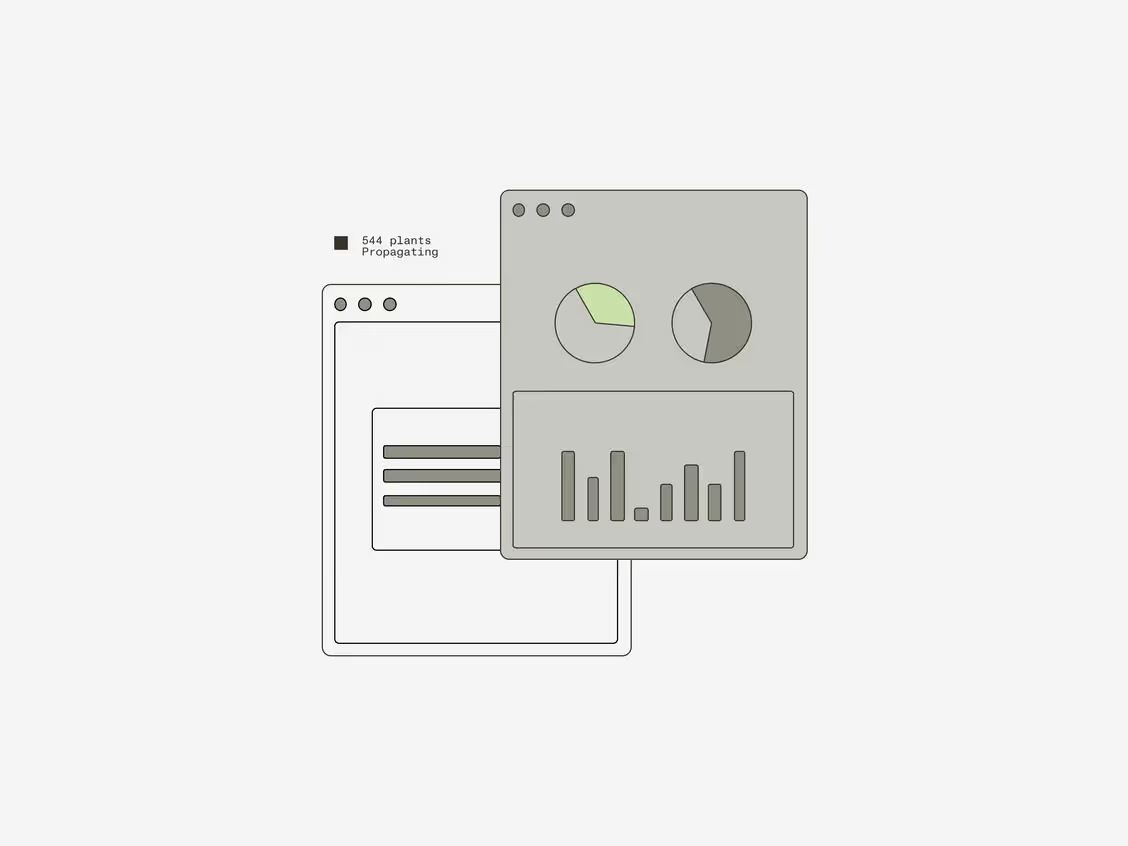Education Guide
Getting into the weeds of vapor pressure deficit (VPD)

When it comes to using data to dial your environment, getting a handle on the science can go a long way – and there’s no better place to start than with vapor pressure deficit, or VPD. In this article, Tyler Simmons, AROYA Cultivation Consultant, explores the details.
What is VPD?
VPD measures the current moisture in the air compared to its saturation point, and its heavily influenced by temperature and humidity conditions.
“Vapor pressure deficit is like the suction force that's felt on the leaves in terms of moisture being removed from the plant,” Tyler explained. “The water inside the leaf is liquid, but the humidity in the air is gas – so there's a lower pressure out there, and that sucks the water out of the pores of the leaf.”
That means growers who can control VPD can use it to their crop steering advantage – but it will take work to keep it in balance with their objectives.
Finding the VPD sweet spot
“Plants are going to perform best within a certain target VPD range, and that range is going to change depending on where you're at in your growth cycle and what your specific goals are,” Tyler said.
Growers must figure out the optimal VPD target range that will facilitate plant growth, minimize the potential mold, and produce the outcomes that ultimately lead to profitability.
VPD controls transpiration rates, and it’s easy to quickly damage crops if transpiration rates are too low or too high.
“If the balance between how quickly water is coming in and how quickly it's being removed is wrong, then you can trigger vegetative growth stimulus,” Tyler explained. “That will delay ripening and potentially harm the quality of the flower.
When plants are young, low VPD levels are ideal in order to reduce transpiration demands and facilitate vigorous plant growth. Exposing small plants to high VPD can lead to a scenario Tyler describes as a “VPD death spiral”.
The plants will try to slow moisture loss by closing their stomata, which will reduce CO2 absorption and slow down photosynthesis. Then, because the plants aren’t releasing moisture into the air, humidity levels will decline even further.
“If you have small plants in a very dry climate, the high VPD can pull moisture from the leaves faster than the root system can replenish,” Tyler said. “The air conditioners that cool the lights also remove humidity from the air – that can start this cycle that ends with very, very unhappy plants.”
As crops near harvest, VPD should be increased to the high end of the plants preferred range – or even above. Although this may cause some plant stress, doing so is a net positive as it creates unfavorable conditions for mold growth.
"Earlier on, you're going to favor a slightly lower VPD level that's in the perfect zone for really vigorous plant growth, reducing transpiration demands and plant stress. Then later on you might target a slightly higher VPD, where water is being removed more quickly from the plant. This serves two purposes," Tyler explained. "It reduces botrytis risk, and it also gives a generative signal towards the end of the growing season that it's time to ripen."
How to set yourself up for VPD success
A cannabis production platform can give growers comprehensive, reliable data about what’s happening in the substrate and climate in real time. Using a platform to review data from past runs can also help growers identify the VPD ranges to target in future runs.
Tyler doesn’t recommend using an infrared Leaf Surface Temperature (LST) or ambient air temperature reading to calculate VPD.
“When you have plants spread across a room with leaves at a variety of levels and locations on the edge, top, bottom, or interior of the canopy, the leaf temperatures are so variable that it's very difficult to try to take the temperature from a single leaf and then reliably calculate VPD for the entire crop,” Tyler said. “LSTs have some advantages, but in my experience, ambient air temp sensors lead to more reliable results.”
Tyler recommends developing a holistic VPD strategy.
“I have my day and night temperature and VPD targets planned for each phase. I'll use a calculator to reverse engineer the RH% required to hit that VPD,” he explained. “Then I'll input the temperature and VPD targets and it outputs the required RH% to achieve the VPD target. For each given VPD and temperature target, we input the humidity setpoint into the crop recipe. Once you have your targets planned out, we simply monitor the climate data and adjust the RH as necessary to meet those targets.”
